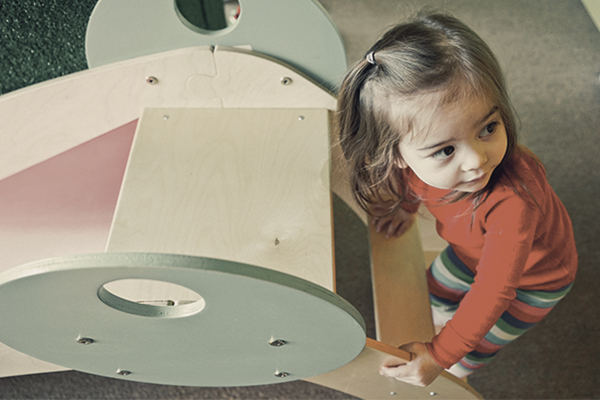
An indoor playground is a place where both you and your child can let off some steam—provided, of course, you know what to do when conflicts flare up. Armed with some of our indoor playground tips, you’ll be ready to handle whatever comes your way. So what are some of the most common playground etiquette issues that parents can expect to face?
To find out, we gathered some intel from parenting groups on Facebook. We asked these moms and dads for their own indoor playground tips and tricks, and then we took their questions to two experts—one a playground owner, the other an assistant manager.
What we learned: perhaps not surprisingly, playground manners boil down to lessons we all learned in kindergarten. “Sharing is caring” and “keep your hands to yourself.” The key is encouraging children to think of the indoor play area as a communal space rather than their own personal playground. Read on for more in-depth tips about how to handle the indoor playground like a pro.

Always Be Prepared
Many parents shared a long list of things to bring: wipes, hand sanitizer, snacks, and treats. However, parents of multiples were a little more bare-bones in their approach. Said one mother of four, “With my first kid, I brought all that stuff. Now [all I bring is] a spray bottle of sanitizer to hose him down before getting into my car.”
Jessica Roubitchek, owner of Chicago’s Purple Monkey Playroom (pictured in the photos), has a few more indoor playground tips: shoes that come on and off easily, clothes that are OK to get wrecked, and an extra pair of socks. “It’s always a good idea to keep a pair of your [own] socks in the diaper bag, too,” she said.
Roubitchek and our Facebook parents agreed that the most important thing to bring is an extra set of clothes. Even when they’re potty-trained, kids can get distracted when they play. “And that’s when accidents happen,” Roubitchek warned. “We’ve had situations where we needed to lend a kid a costume to go home in.”

Show Your Kid How to Get the Most Out of Sharing
Imagine your child slowly climbing up the ramp to a slide, allowing a long line to form behind him. It’s only polite to teach your child not to dilly-dally, but it’s also difficult when young ones have yet to learn empathy.
Daniel Katz, the assistant manager of Chicago’s Kid's Island, suggested a little bit of harmless manipulation. The trick is to show your kid how he stands to benefit from using playground manners. The faster he climbs up that side, after all, the faster his next turn will come up. Katz framed this in a way that might get through to your child: “Helping others is also helping yourself.”

Be Extra Polite Around Other Kids and Parents
Dealing with conflicts between kids or parents is a sticky situation. What happens if someone’s child is being too rough? What about that one little girl who’s only interested in what other kids are playing with? And what if the parents aren’t paying any attention to their little horror show?
Many Facebook moms and dads advocated not saying anything and simply redirecting your child to a different part of the indoor play area. When we asked Roubitchek, she suggested coming down to the other child’s level and using a nonthreatening tone. “Sweetie,” she advised saying to a pushy child, “you need to wait your turn. Where’s your mom or dad?”
Katz offered a slightly different approach: simply ask the offending child in a neutral tone, “Why are you doing that, Matthew?” Usually, parents’ ears will perk up when they hear their own child’s name. In any case, parents can be sensitive, so it’s always best to approach a situation in a polite and nonjudgmental way.


Keep Your Hands to Yourself
When two kids really get into it, intervention is the best strategy for toddlers and younger children. “At this age,” explained Roubitchek, “you want to avoid [it escalating to] hitting or pushing. … They need a lot of guidance, so it’s OK to gently direct the way the situation should play out.”
Older kids, however, should probably learn how to work it out on their own. As one Facebook mom succinctly put it, “Kids need to learn how to deal with jerks. … It’s really hard not to leap to your child’s defense, but it’s important to let kids figure these things out themselves.” Of course, if you encounter a child that’s too disruptive or a parent that’s too hands-off, notify the staff. Part of their job, Katz said, is to stay on top of these situations.

Clean Up After Your Kid
During playtime, the staff is usually around to clean up the smaller messes. But if your child pulls all the costumes off the hooks or spills dolls all over the slide, you might want to help or gently nudge your child to put them back.
Playground etiquette extends to keeping your own things neat, too—especially your stroller. “Not only does [folding up your stroller] make more space and less chaos,” Roubitchek said, “it prevents the safety hazard of kids climbing into open strollers.”
Try to Relax a Little
We’ll let one Facebook mom sum it up with one final indoor playground tip: “Bring a friend and some coffee. Let your children roam. Every parent is there for the same reason: to catch a break.”
Photos by Stephanie Anderson, Groupon






